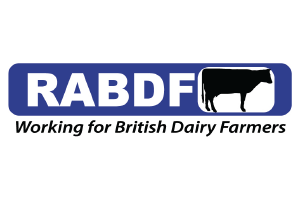Policy Update from Tim Brigstoke, RABDF Policy Director:
1.The UK Free Trade Agreement with New Zealand has been signed. All tariffs on UK exports have been eliminated, likewise tariffs on 96.7% of UK imports. A transitional tariff quota will apply to UK imports of beef on a reducing basis, to sheep reducing over 20 years and to butter and cheese reducing over 5 years.
2.The UK and Canada have commenced negotiations on a new Free Trade Agreement (FTA).
3. Defra have announced updates to the Sustainable Farming Initiative which is due to start in June. For the improved grassland soils standard, payment rates will be £28 per hectare at the Introductory level and £58 per hectare at the Intermediate level. Payment rates differ per sector/environment (e.g. moorland).Applications are made via the Rural Payments Agency (RPA) and will be processed on a rolling basis with no deadline.
4.Following the end of the EU Rural Development Programme,the Welsh Government has allocated funding of £227 millions over the next three years to provide grants for farm scale land improvement, on- farm environmental improvements and on- farm efficiency and diversification. They also specifically mention food and farming supply chains.
5.The first forecast of Farm Business Income by farm type for the year to Feb 2022 has been published. The income on cereal farms rose by 51% to £108,000;dairy farms by 21% to £112,000 and most other sectors show some increases except pigs where there are forecast falls of 73% to £13000 and 51% for poultry farms to £38000.
6.In 2020/21 the average level of liabilities across all farms in England fell slightly to £246,100,the average net worth was £1.94 millions, a small increase on the previous year:41%
of farms had a net worth of at least £1.5 millions. The average net worth per hectare for cereal farms was £15,900 for cereal farms,£12,700 for dairy farms ,£18,300 for pig/poultry units whilst it was £37,600 for horticulture farms.
7.Average farm income in Scotland in 2020/21 is estimated to be the second highest since 2012 at £39,200,up £10k on 2019/20.The average income of dairy farms was £99,600,the highest since 2012.
8.AHDB levy rates for 2022/23 remain unchanged from 2021/22.
9.The UK average '"all milk" price for Jan, just reported, showed an increase of 1.34 pence per litre, resulting in an average of 35.46 ppl (5.69 ppl above the average a year earlier and 5.87 ppl above the rolling 5-year average).The EU (excl UK) average for Jan was 36.11 ppl.
10.APHA has validated a new polymerase chain reaction test which can detect the bacterium responsible for bovine TB directly from tissue samples collected at post-mortem inspection. The new method will reduce reporting time from 22 weeks to 3 weeks.
11.GB milk production is expected to to finish the 2021/22 year 1.6% down on 2020/21 with only the first three months of the year having shown increases. In 2022/23 production is forecast to fall by a further 0.8%.
12.Data from BCMS shows the milkng herd declined by 2% in 2021 to 1.64 million head.
13.During Feb, UK dairies processed 1,050 litres of milk with the rolling annual average down 0.2% on Jan while the month on month average was down 9.1%.Cheese production fell 5%to 38,900 tonnes and milk powder production fell by 41% to 3,500 tonnes but butter production rose by 7.7.% to 16,500 tonnes.
14.Defra has announced that changes to the use of urea fertiliser have been postponed for a year and that, when introduced, they will include the use of ammonia inhibitors rather than a complete ban.
15.Revised and improved statutory guidance has been published on how farmers should limit the use of slurry and other farmyard manures at certain times of the year.
16.In the latest Rabobank quarterly report, global milk production is forecast to fall by 0.7% in the first half of 2022.
17.The Competition and Markets Authority has approved the merger of Freshways and Medina Dairies.
